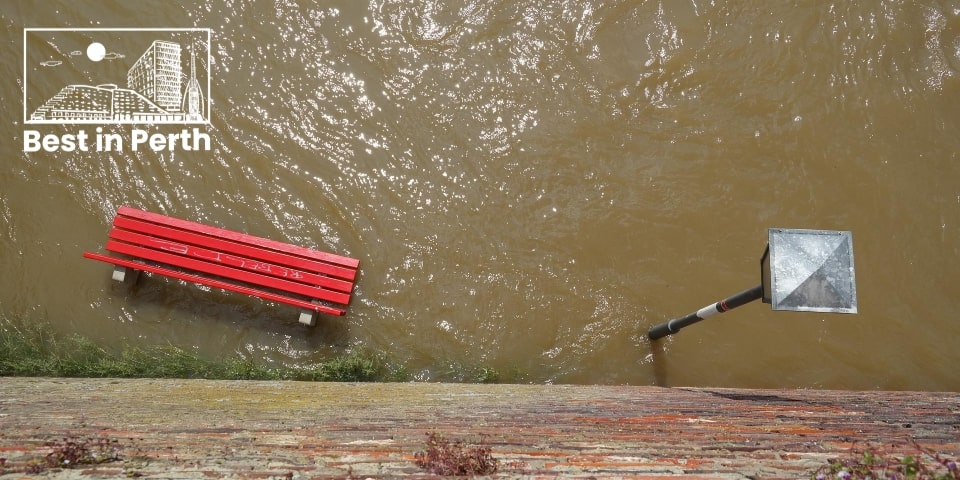Categories > Guides and Tips

Why Does Perth Flood?
It can flood in Perth because of winter storms, river systems, flood plains, or lack of planning in the city.
Of course, many aspects have to be considered in Perth’s flooding. For your reference and safety, check out the detailed reasons below and stay vigilant.
Winter Storms
Perth typically experiences heavy rains during winter storms. Flooding often happens when a slow-moving cold front interacts with low pressure, allowing warm air to rise and producing tropical storms.
Strong winds in the west or northwest can also lead to a buildup of water along the coast. This floods portions of the river’s foreshore with a storm surge during high tide.
In addition, tropical cyclones are also a factor in flooding since it causes storm surges and extreme winds.
Risks from History
Although major flooding isn’t typically associated with Perth, history demonstrates that the risk exists.
In Perth, Swan River flooding was first noted in 1830 when the river swelled by 6 meters. The worst happened in 1862 when the Swan-Avon watershed had three weeks of nonstop, intense rain.
Perth was submerged under almost 2 meters of floodwater for weeks. Several people died and were traumatised due to the flooding, as it also wrecked homes, farmland, and bridges.
The victims didn’t only require physical recovery but also mental health support from the destruction.
To avoid these potential flood damages, it helps to know where to evacuate and who to call. For unforeseen accidents that may cause severe injuries, check your health insurance for relevant policies.
Fortunately, research by the Bureau of Meteorology shows that since the 1960s, Perth has had less annual severe rainfall, both in frequency and total amount.
River System
Perth’s river system poses a genuine risk of flooding the city. Major river floods, however rare, have the most effects on Perth but require a lot of rain over a lengthy period.
The unprecedented rainfall in February 2017 in Western Australia, which ruined crops and damaged infrastructure, served as a demonstration of this.
This also applies to the Swan Valley, which has significantly affected wine growers. According to estimates, the water damaged highways, bridges, and farms, costing hundreds of millions.
Flood Plains
For thousands of years, people have utilised flood plains. Other than providing water, transport, and energy, highly fertile soils are created by flood-related sediments and proximity to rivers.
This is why Perth’s farms and communities are located on floodplains which may cause flooding. Residents in these areas of Perth may regularly need to consult a dermatologist to treat common skin, soft tissue, or foot infections from floods.
To resolve this, floodplain managers and hydraulic engineers have modelled and mapped the river and its tributaries using historical rainfall and flood level data.
Additionally, the Bureau of Meteorology, the Department of Water, and the Fire Emergency Services Authority all work together to monitor rainfall and river height gauges as part of Perth’s flood warning system.
To some extent, dams and other physical engineering solutions can help safeguard floodplains.
However, they frequently cost a lot and can never fully guard against floods. Moreover, these may also impact the river system and the ecosystem.









